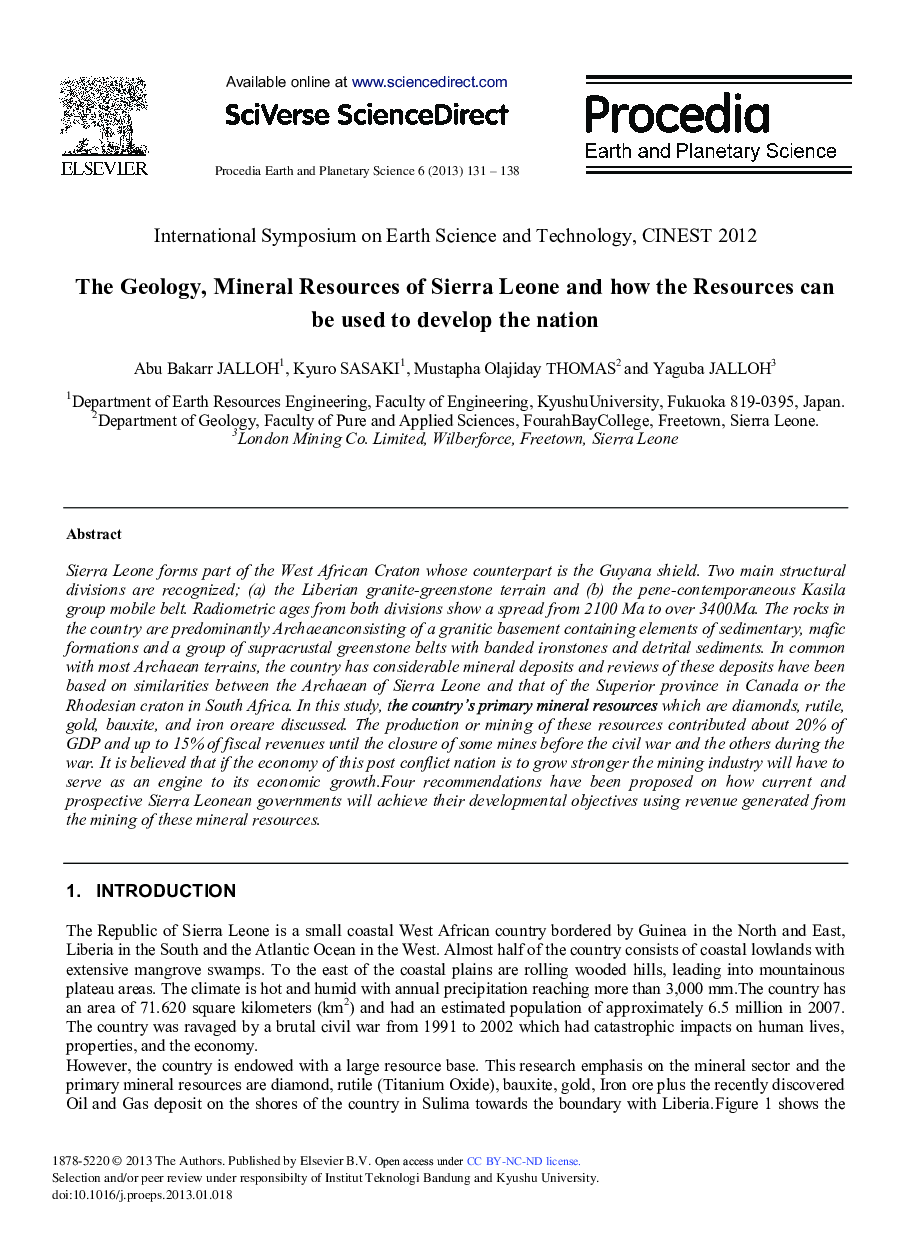| Article ID | Journal | Published Year | Pages | File Type |
|---|---|---|---|---|
| 4675339 | Procedia Earth and Planetary Science | 2013 | 8 Pages |
Sierra Leone forms part of the West African Craton whose counterpart is the Guyana shield. Two main structural divisions are recognized; (a) the Liberian granite-greenstone terrain and (b) the pene-contemporaneous Kasila group mobile belt. Radiometric ages from both divisions show a spread from 2100 Ma to over 3400Ma. The rocks in the country are predominantly Archaeanconsisting of a granitic basement containing elements of sedimentary, mafic formations and a group of supracrustal greenstone belts with banded ironstones and detrital sediments. In common with most Archaean terrains, the country has considerable mineral deposits and reviews of these deposits have been based on similarities between the Archaean of Sierra Leone and that of the Superior province in Canada or the Rhodesian craton in South Africa. In this study, the country's primary mineral resources which are diamonds, rutile, gold, bauxite, and iron oreare discussed. The production or mining of these resources contributed about 20% of GDP and up to 15% of fiscal revenues until the closure of some mines before the civil war and the others during the war. It is believed that if the economy of this post conflict nation is to grow stronger the mining industry will have to serve as an engine to its economic growth.Four recommendations have been proposed on how current and prospective Sierra Leonean governments will achieve their developmental objectives using revenue generated from the mining of these mineral resources.
